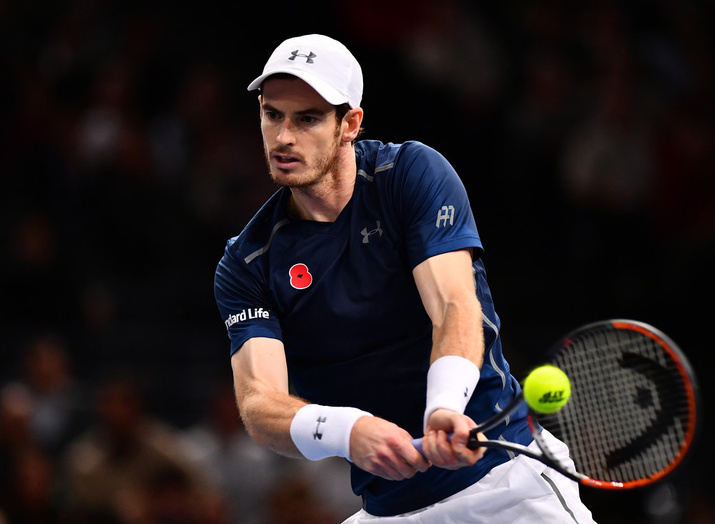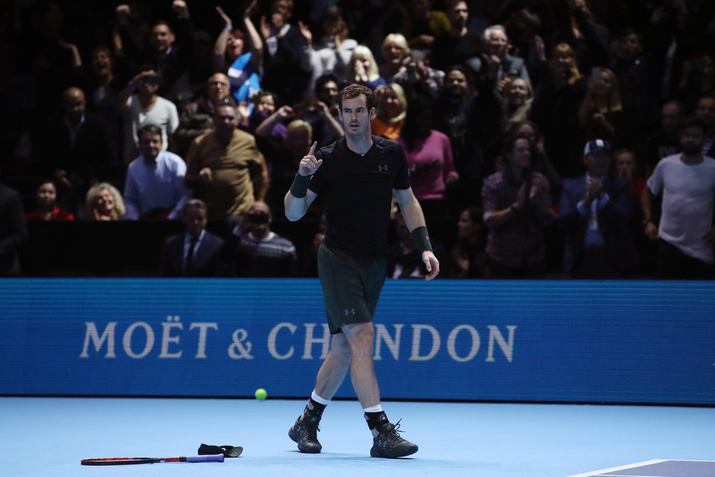Don't miss any stories → Follow Tennis View
FollowThe Metamorphosis of Andy Murray
Former world number one Novak Djokovic may not be the same player he was in 2015, but neither is Andy Murray. Unbeknownst to him and everyone else, the newly crowned year-end number one began his transformation that season.
“Slow and steady wins the race”, may be an apt description of his recent ascendance to the top of the ATP World Tour rankings let alone his career, but it fails to adequately illustrate the subtle yet dramatic shift in Murray’s disposition.

While Djokovic’s coach attempted to minimize the Serb’s recent downward spiral by asserting it was due in part to the absence of Federer and Nadal, Murray, while no one was keeping score, morphed into a seemingly unbeatable opponent.
Although it would be foolish to minimize the impact of Ivan Lendl’s recent return to Murray’s team, the twenty-nine-year-old Scot has undeniably propelled his game to another level.
Playing in an era dominated by Federer, Nadal, and Djokovic, Murray had not won a grand slam title since Wimbledon 2013. He continues to castigate himself and his box but it no longer holds him hostage. Measured introspection appears to have catapulted him to a previously unattainable level.
The 2015 season was monumental for a number of reasons. In addition to ending Britain’s 79 year Davis Cup drought, Murray won his first and second career clay court titles in succession during the spring European swing. In the final of the Masters 1000 event in Madrid, he dethroned the king of clay Rafa Nadal in straight sets.
Despite losing a grueling five-setter to Djokovic over the course of two days in the semifinals at Roland Garros, he defeated the Serb for the first time since Wimbledon 2013 at the Canadian Open. This victory ended an eight-match losing streak and marked the first time he defeated Djokovic in the deciding set of a best of three match.
Seven finals, four titles and a win/loss record of 71-14 afforded Murray the requisite confidence to make additional gains the following season. These notable achievements spurred the transformation already in progress.
The serve – both first and second - and forehand have certainly improved but it’s his mental fortitude and sustained focus that have most transformed. Over the course of the 2016 season, Murray would repeatedly resurrect himself including two record-setting, three hour plus matches at the ATP World Tour Finals.
There was no shortage of drama in 2016. While emerging stars like Alexander Zverev and Taylor Fritz made substantial progress and the Austrian, Dominic Thiem cracked the top ten, change also was in store for the perennial top four.
Federer and Nadal were sidelined for most of the season due to chronic injuries while Juan Martin Del Potro overcame his and made the final at the Olympic games in Rio.
It seemed highly improbable that Murray would overtake Djokovic and claim the top spot given the massive number of ranking points the Serb had amassed. Firmly entrenched as world #1 at the start of the season, Djokovic focused on winning his first French Open.
Many believed he would achieve a calendar year grand slam having defeated Murray in the finals at both the Australian and French Open but suddenly, the narrative changed. Murray won his first title of the season at the Italian Open without the loss of a set. The victory over Djokovic in the final was pivotal for it marked the first time he had defeated him on clay.
Murray continued to demonstrate steely resolve and endurance during the grass court season. Despite being down a set and a break against Milos Raonic, Murray prevailed and secured a record 5th championship at the Queens Club.

In the final at the All England Club, he overwhelmed Raonic in straight sets for his second Wimbledon title. A repeat performance was also in store at the Olympic games in Rio where he dismantled an inspired Del Potro in four sets to claim his second and consecutive gold medal.
Although Murray and Djokovic lost at the US Open, there was still plenty of tennis to be played and ranking points to be earned. Djokovic withdrew from the China Open and lost early in Shanghai while Murray won both titles without the loss of a set.
By winning his 7th title of the season in Vienna, Murray significantly closed the gap with Djokovic and thus focused on reaching the final at the Paris Masters to secure the number one ranking. Djokovic gifted Murray with a quarterfinal loss to Marin Cilic while Raonic handed him a walk over. As the newly crowned world no.1, Murray defeated John Isner in the final in straight sets.
Pundits pondered the inevitable question: will Murray solidify his reign as world no.1 by winning the ATP World Tour Finals or will Djokovic reclaim the crown and win his 6th title at the O2 arena?
Murray had never won the season-ending championship or even made a final, therefore, it seemed plausible he might succumb both to the mounting pressure and the Serb’s prowess on an indoor court.
Murray silenced the critics by winning his three round robin matches and saving a match point against Raonic in the semi-finals. His resounding victory over Djokovic in the final is a microcosm of the entire season.
His improved technique and purposeful aggression have unequivocally paid dividends but so too have his conviction, composure, and passion. A single-mindedness, before rarely seen, now defines his demeanor.
His metamorphosis complete, Murray finished the season with nine titles, a win/loss record of 78-9 and the year-end number one ranking. The only major trophy now missing is the coup de musketeer. It remains to be seen how long Murray will reign but clearly it will be with a new found sense of urgency.










